
(Not) Like A Virgin: This design trend dominated Milan Design Week for the first time
Milan Design Week is the trend show par excellence. Among them, perhaps not the newest, but certainly the most forward-looking: circular design.
The majority of creative minds exhibiting at this year's Design Week in Milan seem to be in agreement: Our planet's resources are limited and therefore we need to rethink outdated production methods. Most of the fifty exhibitions I was able to visit showed me this. I particularly liked three of the projects because they illustrate that waste products can be transformed into aesthetic objects. They give hope that recycled materials will still be used in a hundred years' time and that the use of so-called "virgin material" will decrease.
Hydro Circal 100R: High-quality, recycled, low-carbon aluminium
At the Spazio Maiocchi gallery, Hydro presented the first aluminium product made entirely from post-consumer scrap that can be mass-produced on an industrial scale. The company specialises in aluminium and renewable energy and says it has designed Hydro Circal 100R to have a carbon footprint that is 97 per cent lower than the global average for virgin aluminium. The material is also said to be endlessly recyclable without any loss of quality.
In order to show what can be made from the extruded, recycled aluminium, the company, under the artistic direction of Lars Beller Fjetland, commissioned seven designers to create a product from Hydro Circal 100R. Among them were objects by Inga Sempé, Andreas Engesvik and Max Lamb - my personal favourite. The British designer made a lamp collection called "Prøve" from the no longer virgin material. With its delicate lines, it is reminiscent of mountain ranges and is a good reminder of why this project was launched: Nature must be protected.
Matek™: an organic material suitable for outdoor use
The "Alder" table collection by Patricia Urquiola for Mater was also on show for the first time in Milan. It consists of a specially developed material made from recycled coffee beans called Matek™, which the Danish company has been working on for years. It processes waste from various sources, including coffee bean husks or sawdust, and combines it with plastic waste or a plastic-based alternative to mould it into new furniture using a pressing process.
With Matek™, Mater not only offers an alternative to products made from primary materials, but also establishes its own recycling model: each design can be dismantled using Mater's own "take-back system" so that the components can be recycled. This may not be a big deal for private use. However, if a hotel decides to completely replace its furniture in the future, it could return the Mater products directly to the brand instead of to landfill.
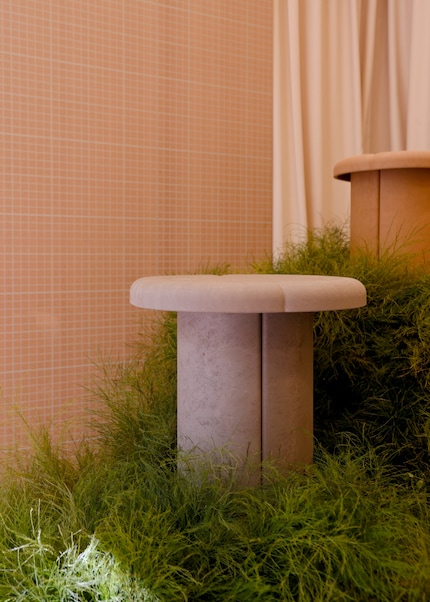
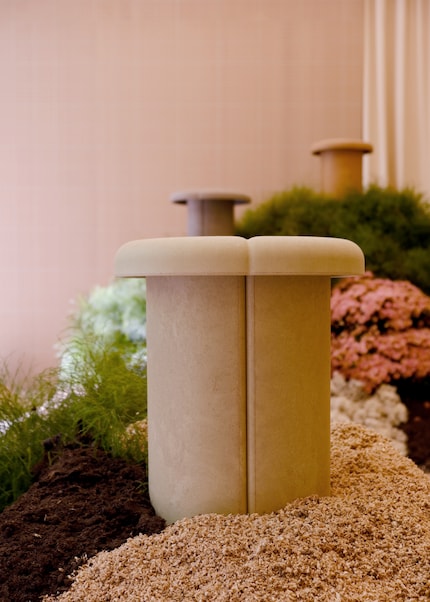
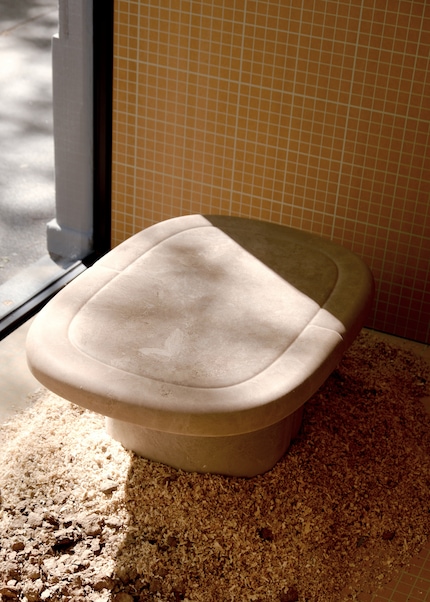
Source: Pia Seidel
Because Patricia Urquiola also pursues a sustainable design approach, the Spanish designer was a perfect match for the Danish brand and its new material. The "Alder" tables are created by moulding Matek™ around a frame made from 94 per cent recycled steel. Visually, they become great through reduction: while their warm earthy tones and round silhouettes emphasise the reference to nature, the delicate lines on the table top function like rain gutters. Because the collection is also suitable for outdoor use.
EconitWood: a material with high sound absorption, thermal insulation and fire protection properties
The innovative material system EconitWood from the German company Additive Tectonics celebrated another debut at Milan Design Week 2024 at Villa Vagetti. This involves reusing wood scraps from sawmills and transforming them into beautifully shaped objects using 3D printing technology. Previously inferior, regional raw wood is also utilised. The result is a material that has a positive effect on acoustics, insulates rooms and is particularly fire-resistant.
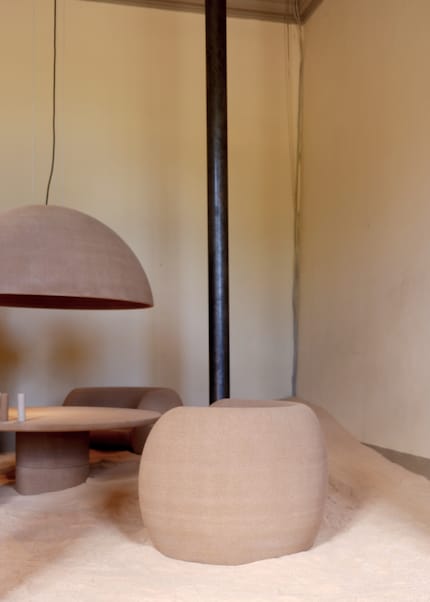
Source: Pia Seidel
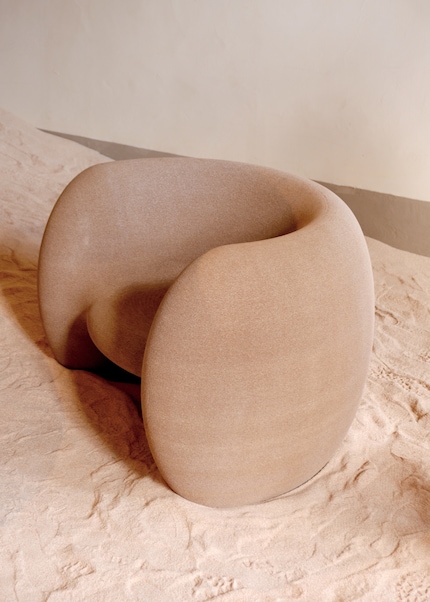
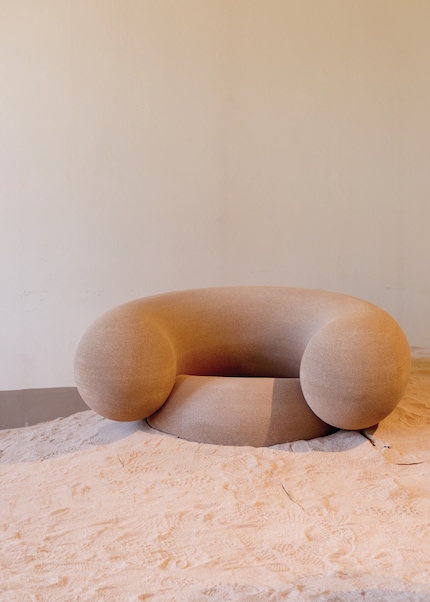
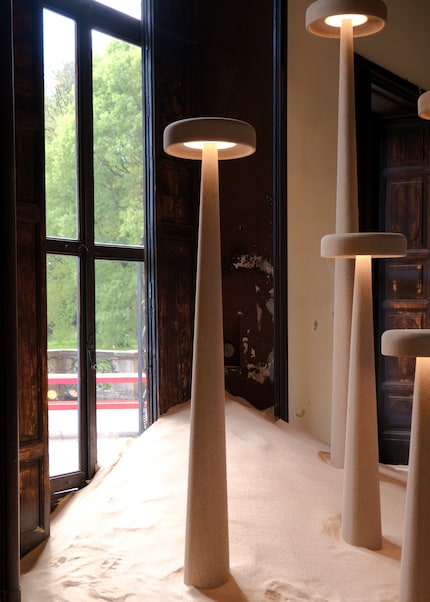
Source: Pia Seidel
With the waste-free production of complex and large-format wooden moulds, EconitWood technology offers new design possibilities for furniture construction or interior design. British designer Harry Thaler was the first to explore them. In the "Printed Nature" exhibition, he surprised visitors with oversized lamps that rose out of the ground like mushrooms and armchairs that disappeared into dunes of wood powder. But there was also furniture that captivated with its simplicity. One of these was a stool with storage space. The combination of natural and futuristic elements was perfect for emphasising the production of the recycled, 3D-printed material.
Like a cheerleader, I love celebrating good design and bringing you closer to everything furniture- and interior design- related. I regularly curate simple yet sophisticated interior ideas, report on trends and interview creative minds about their work.